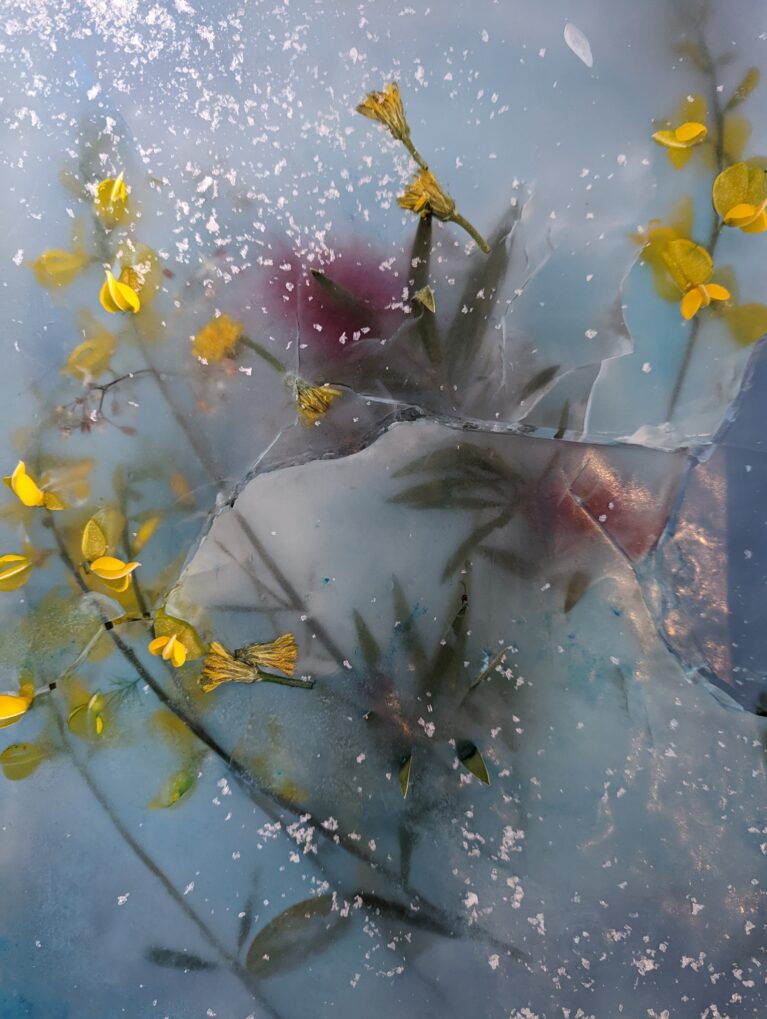Lichen Kelp, Mist, a still from Passiona Anemona (working title) video work, 2025.

COOL: How We Did It
Set in 2035, COOL: How We Did It features artwork reflecting on how local communities strategically collaborated to fast track the transition to regenerative and resilient systems.
In defiance of the current path towards a 3°C hotter world, CLIMARTE’s evolving, science and social research driven project presents creative blueprints and roadmaps for community-focussed economies powered by 100% clean and regenerative energy.
Referencing the best available science and sustainable innovations, COOL artwork shows how Fresh Fuel* could complement community driven solar, wind and battery technologies to secure clean, reliable power that directly responds to local needs; powering things that were challenging to electrify, and providing flexible backup fuels essential for the renewable energy transition.
In drawing down carbon and generating oxygen, by 2035 these fast growing, natural alternatives are also effectively displacing petroleum-based plastics, and chemical fertilisers. In addition, they’re providing highly nourishing food supplements and medical treatments for people and animals and regenerating soils. Grown in globally distributed, locally scaled (in contrast to ‘industrial’) models, Fresh Fuel (for food and energy) is also delivering jobs, purpose, and hope for a better future for communities everywhere.
Inspired by the possibility of a transformed future, COOL is grounded in the past and anchored by First Nations’ ‘caring for country’ principles and protocols.
‘Not commercially viable’? In obstructing R&D for regenerative alternatives, this is precisely what the fossil fuel industry said about solar and wind energy as well as batteries, all of which are already cheaper and more efficient. Consumer International’s June 2025 report shows that 80% of global consumers not only support a transition to renewable energy but are mobilising at scale to realise it. So, what role do artists play in lighting the way?
COOL: How We Did It artwork is being created in collaboration with scientists and researchers for presentation during COP31, which Australia is co-hosting with Türkiye after the authoritarian state refused to withdraw its unpopular bid.
We gratefully acknowledge the City of Yarra for supporting artwork depicting a Fresh Fuel business plan, in development by Lichen Kelp.
* such as from algae biofuels (in development in 1940s), oleaginous bacteria, hemp, bamboo, yeast, mycelium and fungi.
Image: Lichen Kelp, snap frozen sunshower, documentation of liquid landscape/performance sculpture, 2023